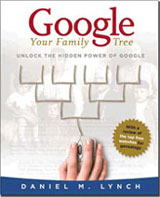|
|
|
|

Soundex
  The Soundex Indexing System
The Soundex Indexing System
Here we go again — like GEDCOM and other terms, Soundex may be unfamiliar to you if you're just starting your family history research, but it won't be long before you'll become familiar with the basic rules of how and why this coding system was developed. Without the Soundex system, many of our ancestors might still be hiding among the ledgers and electronic records we use every day.
The following text is courtesy of the National Archives and is based on "Using the Census Soundex," General Information Leaflet 55 (Washington, DC: NARA, 1995), updated February 19, 2000.

To use the census soundex to locate information about a person, you must know his or her full name and the state or territory in which he or she lived at the time of the census. It is also helpful to know the full name of the head of the household in which the person lived because census takers recorded information under that name.
The soundex is a coded surname (last name) index based on the way a surname sounds rather than the way it is spelled. Surnames that sound the same, but are spelled differently, like SMITH and SMYTH, have the same code and are filed together. The soundex coding system was developed so that you can find a surname even though it may have been recorded under various spellings.
To search for a particular surname, you must first work out its code.
 Basic Soundex Coding Rule
Basic Soundex Coding Rule
Every soundex code consists of a letter and three numbers, such as W-252. The letter is always the first letter of the surname. The numbers are assigned to the remaining letters of the surname according to the soundex guide shown below. Zeroes are added at the end if necessary to produce a four-character code. Additional letters are disregarded. Examples:
- Washington is coded W-252
(W, 2 for the S, 5 for the N, 2 for the G, remaining letters disregarded).
- Lee is coded L-000 (L, 000 added).
 Soundex Coding Guide
Soundex Coding Guide
| Number |
Represents the Letters |
| 1 |
B, F, P, V |
| 2 |
C, G, J, K, Q, S, X, Z |
| 3 |
D, T |
| 4 |
L |
| 5 |
M, N |
| 6 |
R |
Disregard the letters A, E, I, O, U, H, W, and Y.
 Additional Soundex Coding Rules
Additional Soundex Coding Rules
- Names With Double Letters
If the surname has any double letters, they should be treated as one letter. For example:
- Gutierrez is coded G-362
(G, 3 for the T, 6 for the first R, second R ignored, 2 for the Z).
- Names with Letters Side-by-Side that have the Same Soundex Code Number
If the surname has different letters side-by-side that have the same number in the soundex coding guide, they should be treated as one letter. Examples:
- Pfister is coded as P-236 (P, F ignored, 2 for the S, 3 for the T, 6 for the R).
- Jackson is coded as J-250 (J, 2 for the C, K ignored, S ignored, 5 for the N, 0 added).
- Tymczak is coded as T-522 (T, 5 for the M, 2 for the C, Z ignored, 2 for the K).
Since the vowel "A" separates the Z and K, the K is coded.
- Names with Prefixes
If a surname has a prefix, such as Van, Con, De, Di, La, or Le, code both with and without the prefix because the surname might be listed under either code. Note, however, that Mc and Mac are not considered prefixes.
For example, VanDeusen might be coded two ways:
V-532 (V, 5 for N, 3 for D, 2 for S)
or
D-250 (D, 2 for the S, 5 for the N, 0 added).
- Consonant Separators
If a vowel (A, E, I, O, U) separates two consonants that have the same soundex code, the consonant to the right of the vowel is coded. Example:
Tymczak is coded as T-522 (T, 5 for the M, 2 for the C, Z ignored (see "Side-by-Side" rule above), 2 for the K). Since the vowel "A" separates the Z and K, the K is coded.
If "H" or "W" separate two consonants that have the same soundex code, the consonant to the right of the vowel is not coded. Example:
Ashcraft is coded A-261 (A, 2 for the S, C ignored, 6 for the R, 1 for the F). It is not coded A-226.
 Free Brochure
Free Brochure
This essay is based on "Using the Census Soundex," General Information Leaflet 55 (Washington, DC: National Archives and Records Administration, 1995), a free brochure available from inquire@nara.gov (include your name, postal address, and "GIL 55 please").

|
|



